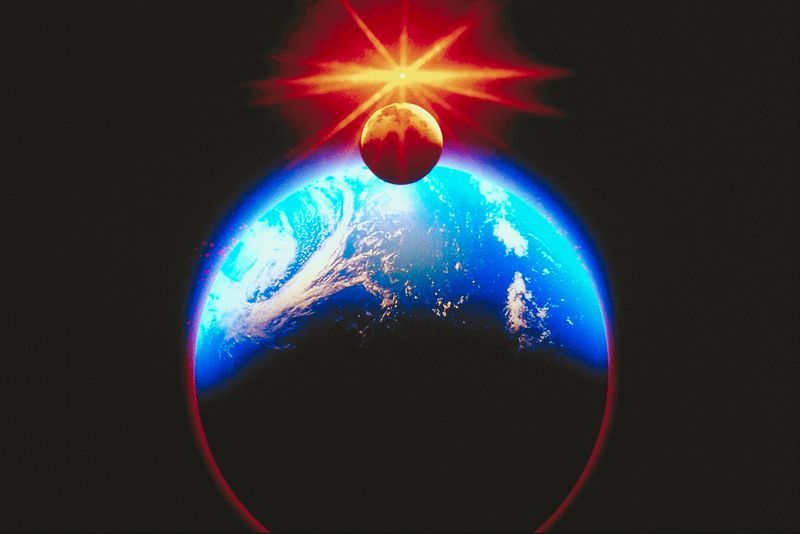How Big Is Big?
by Mary Hendren - May 18, 2011
A research astrophysicist helped make incomprehensible distances more understandable—and shared with us the most amazing thing about it all.
Dr. Livengood took 12 paces to cross from stage right to stage center. He turned back to stage right where Ian stood. Those of us sitting in the front row saw the straight pin he held up.
“The head of this pin,” he said, “represents the size of the earth compared to the sun,” and he pointed to the yellow grapefruit-sized ball Ian held. “I’m about the right distance the earth is from the sun. Would you like to see me travel the speed of light back to the sun?” Sure, we would. But how could he go that fast?
Everyone laughed as he inched toward Ian. We had forgotten the perspective. His 12-pace trek from earth to sun at the speed of light would have lasted eight minutes.
Making science exciting
Timothy Livengood came to Corpus Christi, Texas, as part of a team of scientists that promote earth and space science education. Back in Baltimore, Maryland, he works as a research astrophysicist for the Challenger Center. His fun traveling job is to make science exciting for school kids, parents and teachers.
In the program we attended, he focused on our solar system in terms of “big” and “far.” “How big are the planets in our solar system?” “How big are they compared to the sun?” He talked about the importance of location, “What happens if you are too near the sun?” Lots of hands shot up. “Or too far away from the sun?” Again, lots of hands. “How long would it take you to get to the nearest star?” No one got close.
He also answered questions from the audience like, “What happens if a big meteor crashes into the earth?” “Was the earthquake in Japan caused by how the planets lined up?”
The most amazing thing
After an entertaining hour he wrapped up with a question. “Do you know what the most amazing thing about all of this is?” How thought-provoking. After years of studying the stars through the best telescopes in the world, what did he think was most amazing?
Would he give an answer that satisfied both nonreligious people in the audience and those of us who believe David, who said the stars are “the work of Your fingers” (Psalm 8:3-4) and the heavens and circuit of the sun declare God’s glory (Psalm 19:1-6)?
It ended up that his answer applied to everyone. He said, touching his head, “What’s so amazing about all this is that we can understand it.”
And it is quite amazing—whether we understand it like the natural man (Romans 1), like David, like the astrophysicists or like the whiz kid who knew almost all the answers, even the name of Neptune’s dark spot.
To explore more about why God created such an amazing universe and what our part in it is, see our booklet The Mystery of the Kingdom.
Mary is the wife of Jack Hendren, pastor. They live in Corpus Christi, Texas, and take delight in being close to the ocean, stars, birds, fields and ranches.
Continue Reading
Run to Obtain the Prize: Take All of the Spiritual Exercises Seriously
by Ellen Buchanan - May 11, 2011
Putting God to the Test
by Tim Groves - May 2, 2011
